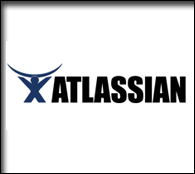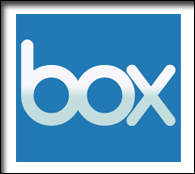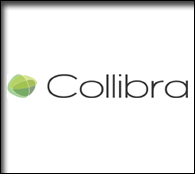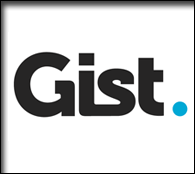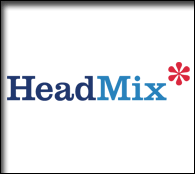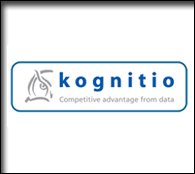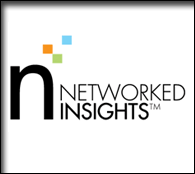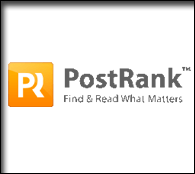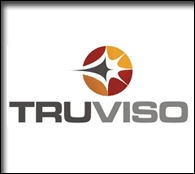conference topics
Beyond the here and now
by Eric Norlin on Jul.05, 2009, under conference topics
The smell of bacon is in the kitchen, there’s a deck being built in the back yard, and I awoke this morning with big thoughts in my head.
I’ve been contemplating the different formats of conferences for the past week or so - all with the goal of doing something “big” around Defrag. I don’t just want to have another conference, I want to effect a change in *something.*
Partly, that means that I don’t want Defrag focused solely on the here and now. Frankly, there’s enough of that in the conference world. Call it the “case study” model for conferences. Not to say it’s a bad thing - it’s just a different thing: find a pain point or rising need in the enterprise, tap the “vendor market” around that need, put successful case studies on stage to attract the folks that are right at the point of adoption (or buying) - and there ya go - great conference business. One problem: these conferences never A) last very long or B) doing any really “BIG” thinking.
Let me stop and be PERFECTLY CLEAR: I am not putting the “case study model” of conferences down. Hell, I helped build, run and sell one (Digital ID World) - and, as a business model that’s tied to a point on the IT adoption curve — it’s about as good as it gets. You might even get lucky and help the industry move forward a bit. Bottom line: more power to them. Please have at it.
But I’m realizing the “case study” model is not what I want out of Defrag. That’s not to say that I want Defrag to be some useless, pie in the sky, talking heads talking to each other mish mash of crap. I don’t. What I want is for Defrag to take a longer view (what I mean by “big thoughts”), to foster a sense of history and to think in 3, 5, 7, 10 year time frames, not in terms of IT budget requests for 2009.
The irony is that I think the really valuable “relationships” that can be had at case study conferences rise to the top at the kind of show I want Defrag to be. They become real relationships that span years, not contracts.
I don’t think Defrag is there yet - but I’m pushing with all of my might to move it closer this year. Practically, that means I’m focused on the agenda in ways I’ve never been before (energy wise). It also means I’m looking for the change I can effect. I don’t know what that is yet. It’s not a change in the “conference industry” - it’s a change Defrag can significantly move forward through something we do at the conference. Maybe it takes us 3 years. I don’t care. That’s actually kind of the point.
I want to “differentiate” by truly being different. By getting above the noise, while still adding real, tangible and challenging value to the everyday realm. You shouldn’t come to Defrag to head-nod in agreement with all of your pals around social media platitudes. You should come to Defrag to be challenged. To get mentally tired (yes, tired); to think about disparate topic areas that strangely seem to relate to what you’re working on.
I don’t want to be in this for the short haul. I don’t want to do 7 figures in revenue and sell Defrag to a media company (been there, done that). I want to look back in 5 years and be proud of what we’ve done together. I think that 5 years from now, we’ll all be different people. I think we’ll be in a tech industry that was a source of refuge from an economy that probably won’t see more than 2% GDP growth in that timeframe.
Yea Yea a lot of community cheerleading, I know. I don’t know what to say. I’m one guy, sitting here on July 5th in Belleville, Illinois, thinking that innovation is what matters — not sniping with competitors, not focusing on salaries and hiring, and not getting so wrapped up in the here and now that you never stick your head up above the successful case study to consider what things you might actually need to think about.
Call me crazy, but I think Defrag’s gonna rock. And I’m gonna spend the next 4 months convincing you that that is the case.
An Agenda First Draft - kinda
by Eric Norlin on Jun.22, 2009, under conference topics, speakers
We’ve posted the “first draft” of the agenda, although it is actually more like an alpha because all that’s really there is format. Don’t get me wrong, we have stuff to put there, but I’ve just posted format at this point (mostly for feedback). As you take a look, some terms to keep in mind:
1. “Fragments”: basically, shorter keynotes. I’m experimenting with this a LOT this year - the mix of short vs. long time frames. Every time I do rapid-fire short times, people attending LOVE it. The speakers always want more time, but they usually don’t realize how being forced to be concise improves what they say. That said, there are way more “fragments” on this alpha agenda than we’ll actually end up having. Like I said, I’m playing around.
2. “Problem-set”: This is an idea I’ve been toying with since Gluecon. What I want to do is have 4 CEOs of startups get up on stage and describe a problem (technical, business, strategic) that they’ve encountered since starting their company that they have no idea how to solve. In other words, it can’t be the problem their startup is solving, it has to be something they’ve discovered since founding their startups. The idea is to crowd-source this discussion a bit and find a creative way to weave a “solution set” session back into day 2 of the agenda (currently not there).
3. “Open Space”: This is some unconference time within the conference. We experimented with this in year 1 and it really worked. Fortunately, we had Jerry Michalski running it in year 1. Unfortunately, he couldn’t make it in year 2 (and we suffered for it). Doubly fortunately, Jerry’s back this year.
4. “Afternoon Topic Explorations”: What I’m trying to do here is A) present 4 distinct “points of view” (POV) around a broad topic and then have a “discussion catalyst” (moderator) lead a group discussion for 20 minutes or so. For instance, “messaging metaphors” might have a POV around why twitter will replace email, a POV around why email enhancers like Gist and Xobni are the wave of the future, a third POV on how Google’s WAVE will change everything, and a fourth POV on the effect that social media is having on the metaphors of messaging. Four, ten minute POVs, and then we have a group discussion led by someone smart in this area.
Broadly speaking, I’m trying to structure in a physical experience of “information overload” or fragmented ideas followed by “defragging sessions” - or longer discussion times that start tying threads together. I’m not sure exactly how this will turn out, but that’s kinda half the fun of between now and then.
There are some things I can already begin to highlight:
1. Andy Kessler is confirmed for a keynote.
2. Stowe Boyd is confirmed for a keynote to talk about “Deep Structure Of The Real Time Stream: Semiotics And Microsyntax” (sidenote: after I looked up what “semiotics” meant, I decided he needs more time.) ![]()
3. I’m putting together a VC panel on day 2 to address the funding environment — specifically, the broad trend we’re seeing around investment in social media leverage startups and social media analytics services. It looks like Brad Feld, Roger Ehrenberg, Howard Lindzon and Fred Wilson are already on board for that.
4. We’ve got a loose session around “Discovery vs. Search” where Robert Scoble and Buzz Bruggeman will be co-instigators (we’ll look to add Bing, FriendFeed, Google, etc).
All in all, not a bad alpha agenda start — with much work to do. If you’re interested in being involved, email me (enorlin AT mac.com).
Lastly, I’m running a special registration discount for this week and this week only (in honor of another conference taking place up in Boston). Use the code “e2″ and drop our price down to the insanely low $895. But hurry, it expires Friday.
Beginning to eye Defrag
by Eric Norlin on Jun.10, 2009, under conference topics, speakers, sponsors
Believe it or not, we’re beginning to work on Defrag 2009. Please check out what past attendee’s thought of Defrag, and then consider attending this year’s iteration. Here’s what we’ve got cookin’ so far:
1. This year’s advisors include -
Roger Ehrenberg
Paul Kedrosky
Chris Shipley
Jerry Michalski
2. This year’s sponsors already include folks like -
Collibra
Gist
Atlassian
MindTouch
box
Truviso
HeadMix
Networked Insights
Freepository
Gnip
Chatterbox
PostRank
NewsGator
3. Early “discussion catalysts” (I’ve decided to call them that, since that’s more accurate than “speaker”) already include folks like-
Kim Cameron
Fred Wilson
Robert Scoble
Buzz Bruggeman
Deborah Schultz
Stowe Boyd
Louis Gray
4. I’m already working on some different “format things” for this year’s Defrag. For one thing, I want to run a “problem-set” session — where we ask entrepreneurs to present a problem they’ve discovered (in 5-10mins) SINCE starting their company. Secondly, I want to run “theme focused” afternoons — where we gather 5-8 differing angles on topic themes and then have discussions following. Needless to say, we’re looking to A) pick up the pace of presentations and B) move more directly toward discussion.
Sound interesting? I hope so. And, believe me, we’re really JUST getting started. If you’re interested in joining our awesome sponsors, shoot me an email (enorlin AT mac.com).
Avoiding the innovator’s dilemma
by Eric Norlin on Nov.25, 2008, under conference topics, defrag "theory"
One of the weird parts of my “job” is to look beyond what attendees say they want to hear more about, and give them things that I think they *should* hear more about (i.e., to provide them with stuff they haven’t thought of yet). Call it the “innovator’s dilemma” for conference organizers. Too often, conference organizers give very little “analytical” thought to the space that their conference exists in, and too much weight to what attendees say they want. Granted, it’s a fine line (I’m not saying “don’t listen to your customers”), but it’s one that a good conference organizer should spend some time on.
That’s what my November-December is about re: Defrag. Take the time to absorb the immediate conference feedback, then think through the whole experience. Finally, once you’ve gained some separation, think about the biggest of big picture stuff and figure out what you need to bring to the table that people *aren’t* asking for. Getting caught giving them simply what they want can only result in a downward spiral for content. You must give them what they need that they don’t know about yet.
Of course, failures will occur. I’m not a world-class prognosticator. But I do get a pretty interesting overall view of things. One that even analysts can often miss, as they’re dragged in different directions by “customers” and vendors - and what I’m talking about (ideally) is off the map for both of those categories.
All of that said, two big pieces have really fallen into place for me in the last few weeks; two pieces that I know we need to get to Defrag 2009 in a substantive way: 1) data visualization; and 2) how a changing “interface” can impact the ways in which we interact with data. Let me briefly address each separately.Â
1) Data Visualization: we had some of this stuff at the first defrag, and I really enjoyed it. My sense is that all of us get so caught up in the “word-driven” applications that we forget the rich gold mine of insight that can be gained through good data visualization. I’m not well-versed in this space, but I’m gonna start digging. We need to start dragging visualizations into all of this semantic, enterprise 2.0, collaborative, social media stuff (and I don’t mean simply video).
2) Changing Interfaces: by this I mean stuff like Oblong and Microsoft surface.  It may seem that these new technologies aren’t all that related to defraggy stuff, but just like data visualization, I think that couldn’t be farther from true. HOW we interact with information and data simply will affect what we gain from it. Accordingly, I think we need to get the teams around these technologies talking with the enterprise 2.0, collaboration and semantic vendors of the world. Sure, textual stuff isn’t going away, but in ten years we won’t simply be using a keyboard and mouse either.Â
So, while I’m definitely listening hard to the feedback that’s calling for more content around collective intelligence, online collaboration, enterprise 2.0, social media and semantic applications, I know that we must bring areas like data visualization and the changing interface to bear on the larger topics of defrag as well. Stay tuned - it’s gonna get interesting-er. ;-)Â
The Systemic Anomaly
by Eric Norlin on Oct.31, 2008, under conference topics
Call this an “off-topic” defrag post, though not totally off-topic…
At the end of the day yesterday, I plopped on the couch, firmly ensconced in “potato” mode, and caught the last half of The Matrix Reloaded. Remember when Neo meets the architect, and they walk through his existence as “the One.” It turns out that he’s just a “systemic anomaly” — essentially, a necessary evil that is the left-over balance that comes from summing the equation that is the Matrix. Why the leftover anomaly? Because it turns out that the only way to get the humans to “accept” the program that is the Matrix is to have them “choose” to accept it at some sub-conscious level. And that slightest bit of individual choice ends up throwing the whole equation into an unbalanced sum — that results in the eventual systemic anomaly. The systemic anomaly’s job, then, is to essentially “reboot” the whole system by choosing 23 humans to live and start over.
So, I’m lying there thinking, “Those wachowski brothers are genius! They’ve given us the PERFECT analogy for free markets and capitalism.” Which is to say, the systems - by their very nature - come with a systemic anomaly that simultaneously brings about the collapse of the system AND reboots it again (choice). And we’re right in the middle of that “anomaly” moment. A built-in, painful and completely necessary reboot.
Can we come up with a “better system?”
Well, the architect tried. But the program upload always failed. Humans simply wouldn’t accept perfection and it’s accompanying lack of choice.
Does that apply only to capitalism and free markets? Probably not. It’s probably also exactly right for social networking, communities, conferences, etc.
Food for thought….or maybe, complete crap. But that’s what my brain thought about last night. ![]()
A snapshot of the defrag crowd
by Eric Norlin on Oct.23, 2008, under conference topics
I’m kind of figuring that most of you already know whether or not you’re coming to Defrag, but on the off chance that you haven’t made your mind up yet, let me help. Come. The crowd we’re assembling is really gonna be something. Here’s a quick snapshot of some of the companies you’ll be hanging out with:
E*Trade Financial
Lockheed Martin
Classmates.com
Nomura Research Institute, Ltd.
Nokia
Oppenheimerfunds
Bank of America
SRI International
IT Conversations
BT
Cisco Systems
Denver Broncos
Denver Nuggets
The Western Union Company
Johnson & Johnson
Qualcomm, Inc.
NC State University
Microsoft
Ziff Davis enterprise
Burton Group
The 451 Group
AMR Research
Honeywell
First Round Capital
Sun Microsystems, Inc.
Register today.
Getting inspired with the Rays
by Eric Norlin on Oct.20, 2008, under conference topics
Yes, the video kick continues - ![]()
Enterprise 2.0 - the walking dead?
by Eric Norlin on Oct.17, 2008, under conference topics
Is enterprise 2.0 “the walking dead?” I think not.
The day ahead - speaking with Chris
by Eric Norlin on Oct.15, 2008, under conference topics
Amidst the day of endless details that make up the two weeks prior to a conference, I’ve got a phone call with Chris Shipley to discuss the sessions she’s involved with at Defrag - and I’m looking forward to it. Folks have long known Chris as one of the smartest folks in tech when it comes to startups and future trends, and she’s obviously running a great conference in DEMO (yes, I’m on the record as stating that DEMO will survive the next 4 years, while TechCrunch50 will not). I’m sure that with Chris leading the discussion, things will move in a productive direction.
The two sessions that she’s moderating are “Getting into the flow applications” and “Making the social web.”
The “flow” session has two companies demo’ing stuff (workstreamer and sxipper), and is really meant to fuel some talk about what happens when we no longer go “to” an application, but rather have apps working in our own personal flow. This is part of the much larger topic we have going at Defrag around re-imagining the metaphors that underlie email, RSS, calendars, etc.
The “social web” session was actually suggested by Kevin Marks of Google. It’s an interesting topic - and one that I think is right up Chris’ alley given some of her recent blog posts.
In any case, that’s one of the highlights of my day ahead — you see, stuff really IS happening outside of the fear and loathing in silicon valley and on wall street. ![]()
Use the code “ejn2″ to get $300 off of the current registration price — and be sure to join us.
Rounding the turn
by Eric Norlin on Oct.13, 2008, under conference topics, general
We’re “rounding the turn” and heading toward the finish line that is Defrag (in three weeks). If you’re “on the fence” about coming, I want to offer two tidbits of information. First, a quote from Rich Hoeg:
My question to you … have you defragged your brain recently. While this conference may not be perfect for you, please understand that my participation at Defrag is on my own nickel and vacation time. As technologists we have a responsibility to maintain our knowledge. For example, this past Spring I spent most of a weekend at BarCamp Minnesota. I don’t want to imply that my company does not provide me technical training. In fact, next month on my company’s dime I will attend some Sharepoint 2007 training. However, if you want to succeed, you need to invest in yourself. Think of it as an ongoing research and development project. In these tough economic times, you will be glad you did!
I’d add this to Rick’s words — view Defrag as a “safe haven” from all of the recent turmoil. Sure, we’ll still be talking about all of this mess, but I guarantee you’re going to find yourself in a room with a bunch of realists who are grounded and optimistic.
Second bit of info: If you haven’t been to Defrag, I wanted to give you a sense of what you’ll encounter over two (plus) days…
You arrive Sunday evening at Defrag and meander down to the lobby to find the “Chris Wand Next gen email” dinner group that you signed up for. Having found them (and not knowning any of them), you head out for a dinner in Denver.
After an evening of good discussions and food, you wake up having already found 2 or 3 “new friends” and great contacts. You check email (for free, as Defrag bought your in-room internet access), and head down to the registration desk - finding some breakfast and coffee nearby. Your morning fills up with some great talks by folks like Paul Kedrosky, Bill Duggan and Howard Lindzon, and you find yourself thinking about issues you already know in some new ways — and with a strange sense of optimism.
The afternoon sessions come at you like a tsunami - and by the time you head in for Mark Koenig’s day ending keynote, you’re wondering how you’re going to coalesce all of this information in your head. Along the way, you’ve discovered one vendor that made you say “wow” (during the lunch networking), and had a chat with a startup guy that’s not even funded, but was dying to show you what he’s working on.
Thankfully, the day ends with some appetizers and an open bar at the evening reception. By now, you’re feeling like you’re in your element - mixing with the crowd, seeing familiar faces, and getting into some really spectacular discussions. One of those great discussions leads you off to a Birds of a Feather dinner, and you go to bed feeling like maybe - just maybe - Wall Street worries aren’t going to consume your entire consciousness for the next two years.
The morning of day two brings that “man, I’m a bit tired” sense that you always get on day 2 of a conference. You head downstairs to grab coffee and use the conference wifi (which has been the best you’ve ever seen at a tech conference), and settle in at one of the tables in the keynote room to plug-in to a power strip (power outlets - what a concept!). You’re not sure what to expect on Day 2, but you’re ready.
Surprisingly, day 2 proceeds to deepen, broaden and really open up your impressions from day 1. Charlene Li is spectacular. A case study you didn’t even know was coming highlights some amazing stuff, and then - surprise - you actually win a prize from a drawing right before the morning break (a Wii - your kids are gonna love you). The afternoon breakouts don’t let up - and now you’re learning things you’d never even considered before — information tomography (?), stream computing, sousveillance. Yikes.
The day ends and you’re spent - in a really, good, satisfying way. Not only have you learned actionable stuff that will help *tomorrow*, but you’re feeling like your head is above the fog and you’re staring at a clear horizon. The day ends with a keynote about some even newer stuff concerning integration of web apps — it’s a bit more technical that you came expecting, but it reminds you to circle this for next year.
You weren’t able to find a good flight out tuesday night, so you’re planning to collapse in your room with some room service and a pillow. But, as it turns out, a bunch of folks aren’t leaving till tomorrow morning, and it seems like everyone’s heading to the hotel bar for one last discussion.
New friends, great connections, new technologies, amazing ideas — and it all seems to have come with a personal touch.
Yep, Defrag sure seems like it was worth it.
….at least, that’s how I imagine your Defrag experience — and it’s what we get up every morning and work for. I hope you’ll join us.
